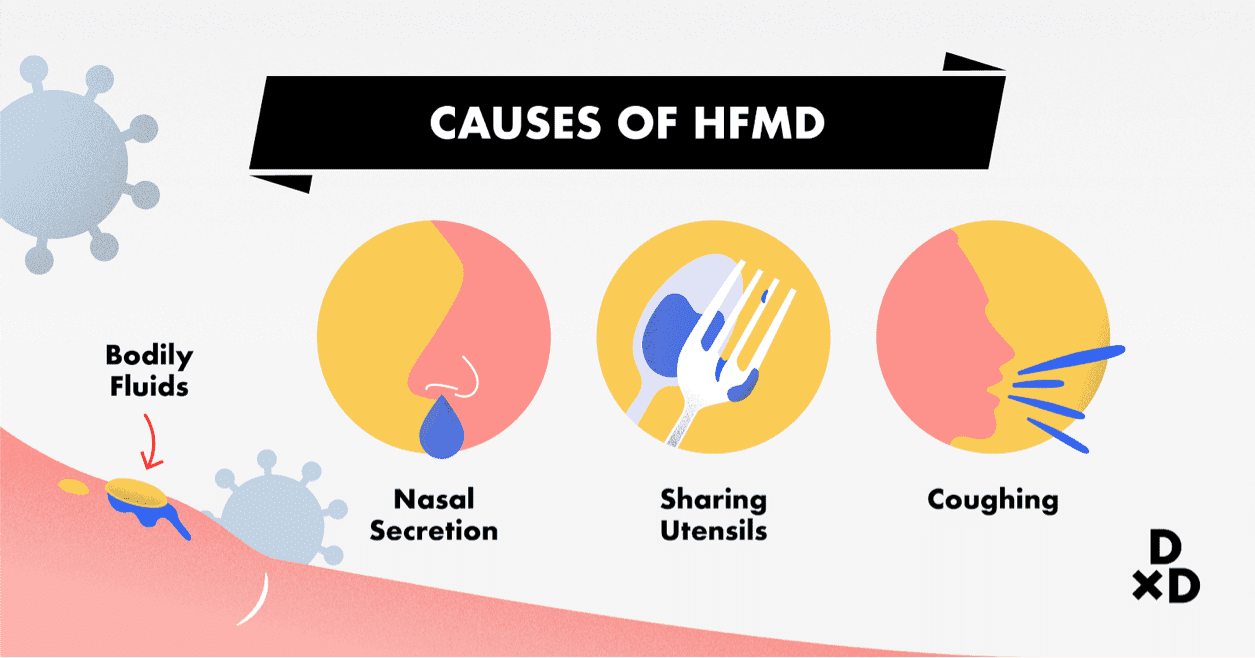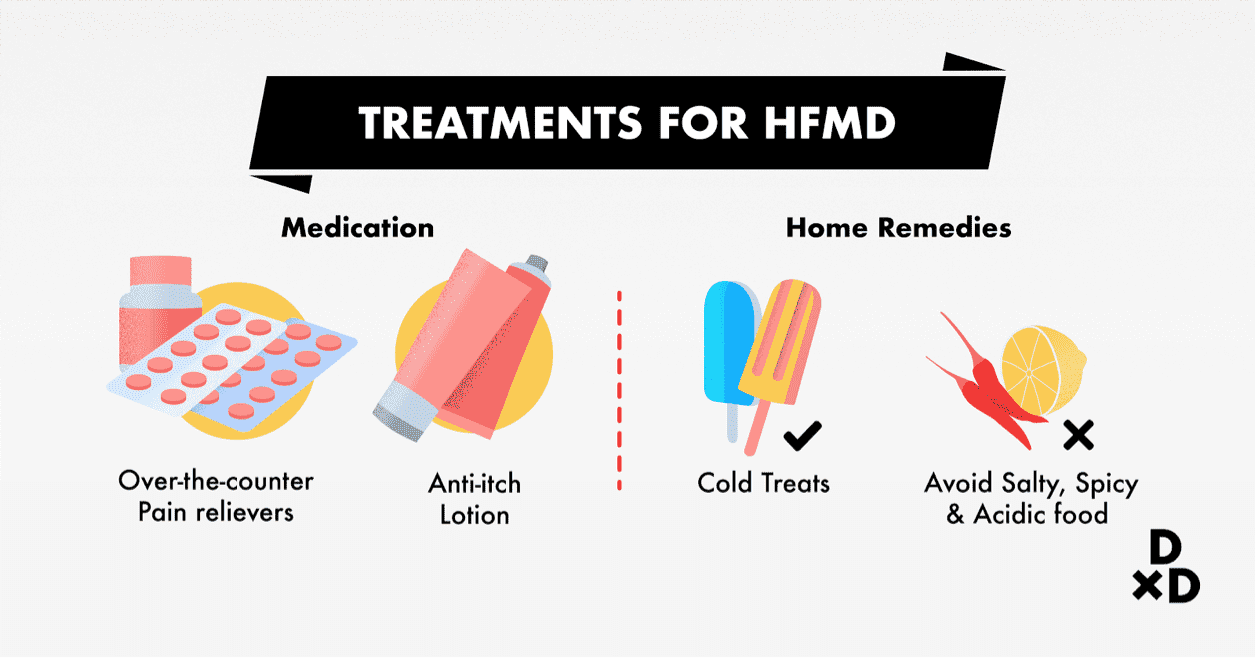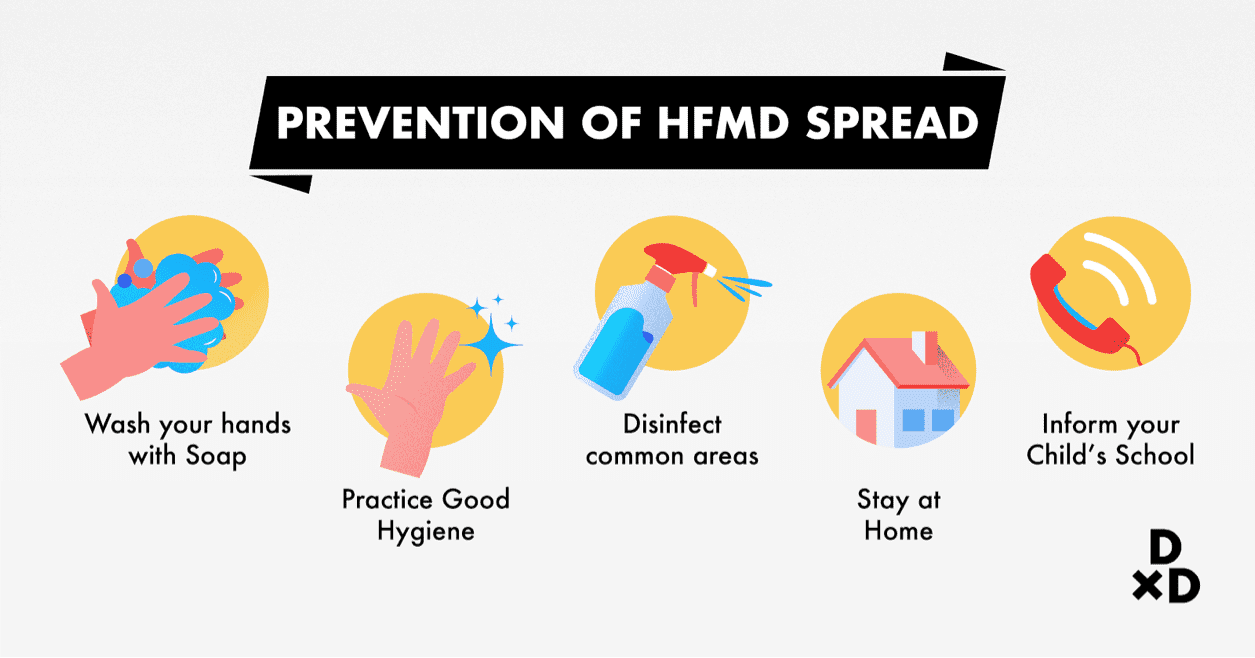At the start of March 2018, we saw a sudden increase in the number of Hand, Foot and Mouth Disease cases. This caused a lot of unrest in the parenting community since it is a common pediatric condition which affects children below the age of 5.
What is Hand, Foot & Mouth Disease (HFMD)?
Hand, Foot & Mouth Disease (HFMD) is a contagious viral infection common in children under the age of 5. HFMD is a minor illness that may cause some pain and discomfort but is usually not life-threatening.
Symptoms of HFMD can be seen within 3 to 6 days of infection. Some symptoms of HFMD includes [1]:
- Fever
- Sore throat
- Loss of appetite
After a few days, more symptoms would appear. This includes:
- Painful blisters in the mouth, usually towards the back of the mouth or on the tongue
- Rashes on the hand, feet and buttocks
Causes of HFMD

As with all viral infections, HFMD is caused by viruses - commonly coxsackievirus or sometimes other enteroviruses. The illness spreads when the virus is transferred via person-to-person contact, between a healthy person and an infected person.
Transmission of the disease typically occurs through the fluids of the infected person. They can come in different forms of bodily fluids such as nasal secretion, saliva, fluids from blisters and stool.
Interactions with such fluids through close contacts like sharing utensils, coming into contact with stool when changing diapers or even coughing and sneezing can result in the virus spreading.
HFMD is especially prevalent in children due to the child care setting they are in.
Potty training and diaper-changing exposes children to the substances which carry the virus.
On top of that, children tend to put their hands and feet in their mouth, making them ingest the virus, further increasing the risks of them contracting the virus.
“Would popping the blisters make them heal faster?”
If you are thinking about popping the blisters on your hands and feet, don’t do it.
Popping the blisters would release the pus, which contains the virus, increasing the risk of infecting others.
To take care of your blisters, keep your hands and feet clean and the blisters uncovered. Wash the blisters with soap and lukewarm water, and gently pat on them to dry them.
In the event that you accidentally pop a blister, immediately wipe or wash the pus away to prevent any risk of infecting others.
Put on some antibiotic ointment to guard against infections and cover it with a plaster [2].
Treatments for HFMD

There is no specific treatment or vaccines for HFMD.
Since it is a viral infection, antibiotics will not work against it and we can only rely on the immune system of the child to combat the virus.
As mentioned previously, HFMD is a mild illness with mild symptoms, and a child can recover within a week or so.
HFMD can make eating and drinking painful since swallowing would affect the blisters in their mouth.
However, it is important for them to be well-hydrated and nourished so that they can fight off the virus. Luckily, there are a number of ways in which you can help your child feel better.
Some medication you might consider would be
Over-the-counter pain relievers. Acetaminophen, like Tylenol, and ibuprofen can provide relief for general discomfort. However, aspirin should be avoided since it can cause serious illnesses in children.
Anti-itch lotion. Calamine lotion is one of the anti-itch creams that can be applied to the rashes on their hands and legs.
If you are worried about giving your child medication at such a young age, you may want to consider some home remedies to provide them with some relief. Some easy home remedies include:
- Having cold treats like ice cream, ice pops and cold beverages to soothe the pain
- Avoiding salty, spicy and acidic food which may irritate the blisters
- Eating soft foods to minimise chewing
- Rinsing your child’s mouth with warm salt water
These remedies would help to soothe the pain and inflammation of the mouth and throat sores caused by HFMD [3].
Prevention of HFMD spread

As mentioned above, HFMD does not have a cure or vaccine currently.
HFMD is most contagious in the first week of the illness, but they can remain contagious for weeks after symptoms have totally left the individual.
So the best way to go about dealing with HFMD would be to avoid contracting it through preventive measures [4].
Wash your hands with soap. This should be done regularly but especially so after changing the diapers of your child. Remember to help your child wash their hands with soap too.
Washing hands with soap can physically remove viruses from the surface of your hands. Soap is especially important since some viruses can be rather “sticky” and cling onto your hands if not washed with soap.
Practice good hygiene. Advise your child not to touch their eyes, nose and mouth, especially if they have not washed them yet. On top of that, they should not make contact or share utensils with those infected with HFMD.
Disinfect common areas. Surfaces and objects like toys and pacifiers should be regularly disinfected and cleaned to prevent the spread of HFMD since the virus can live on these surfaces for a few days. [5]
Stay at home. If someone has been infected, advise them to stay at home and isolate themselves so that they would not spread the virus.
Otherwise, choose to stay away from them physically so that the virus would not be transmitted to you.
If you or your child are the ones who have been infected, ensure that your symptoms have totally disappeared and the medical certificate issued by your doctor has expired before returning to work or school.
Inform your child’s school. Since your child could have spread or contracted the disease from their school, it is important to let the school know about the situation so that they can take precautionary measures. Schools or playgroups can take extra care to disinfect their desks, toys and classrooms so that the virus does not spread to other children.
Complications of HFMD
While HFMD is a mild condition, there are rare cases where it can lead to complications due to neglect or inappropriate handling of the illness. Some of these complications include:
Dehydration. The most common of the complications, patients who refuse to take their liquids due to the pain of the sores in their mouth would face dehydration, especially so for younger children.
Parents should make sure that their children are regularly well hydrated during this period of time.
Fingernail and toenail loss. While doctors are still unsure if the primary cause is the HFMD, there have been reports of people losing their nails a few weeks after contracting HFMD.
Most of these reports have been from children. However, there is no need to worry as it is not life-threatening and the nails will grow back on their own.
Viral meningitis. A small number of HFMD cases led to the development of viral meningitis.
Viral meningitis is the inflammation of the lining of the brain and spinal cord. Symptoms include fever, headaches, back pains or stiff necks.
Nausea, sensitivity to light and lethargy are also some effects of viral meningitis. An infected person might need to be admitted into the hospital depending on the severity of the situation.
Typically, babies younger than 1 month and those with weakened immune systems would face greater severity. [6]
Encephalitis or paralysis. An even rarer case of complication would be the escalation to encephalitis or paralysis.
Encephalitis is the swelling and inflammation of the brain and typically has mild flu-like symptoms.
Sometimes, symptoms can be more severe and include seizures and problems with sight, hearing or movement. Encephalitis can be life-threatening for some, hence diagnosis and treatment are time-essential. [7]
If you are pregnant and suspect that you are carrying the disease, please consult your doctor immediately.
Pregnant women who contract HFMD may develop complications which are more severe than a normal adult.
Complications of HFMD in pregnant women includes miscarriage, stillborn and possibly multiorgan failure in newborns for mothers who were infected close to their delivery [8] [9].
What’s the difference between HFMD and Chickenpox?
The appearance of similar symptoms like fever and formation of blisters can cause confusion between Chickenpox and HFMD.
The most obvious clue to differentiate the two would be where the rashes first developed.
Chickenpox rashes usually develop from the torso and spread outwards in 7 to 10 days while HFMD rashes develop mainly on the hands, feet and mouth.
Another telltale sign is that HFMD blisters tend to be yellow or red in colour while Chickenpox blisters are usually clear.
Finally, HFMD blisters tend to be more painful than Chickenpox blisters which tend to be itchier [10].
Is HFMD the same as Foot-and-Mouth Disease?
Although these diseases sound similar, they are vastly different and should not be mistaken for each other.
Foot-and-Mouth Disease (FMD) is sometimes known as “hoof-and-mouth disease” and only affects cattle, sheep and swine.
Humans are not susceptible to FMD and similarly, animals are not susceptible to HFMD. On that note, you do not have to worry about infecting any animals if you have pets at home [11].
In Conclusion
HFMD is not a life-threatening condition but if not handled properly, it can lead to a lot of complications which may, in turn, become a danger to you and those you love. If you are unsure about how to approach HFMD, it is best to visit your doctor to get the appropriate remedies before it worsens.
